Even though most apps in the app stores are free, developers and business owners still must develop robust monetizing strategies to ensure their products are successful in both the adoption and economic fronts.
When was the last time you paid to download an app? Most of us have never paid for a download. For others, it has probably been a while since we spent a few bucks to click that download button. Either way, the truth of the matter is that today, most apps in the App Store and Google Play are free. Actually, of the almost 2 million apps available on Apple’s platform, around 1,800,000 are free to download. That’s nearly 94% of the apps in the entire store that doesn’t require any fee for users to download them! Surprised? We sure are! These numbers bring another question to mind. How do all these free apps make money? Do these mobile products survive by remaining free forever? Indeed, us app developers must get paid. And startups and businesses must somehow make money from these free apps, right? Of course, they are. Otherwise, what’s the point? But how? App monetization.
Like most businesses, if not all, mobile products, the developers that ship them and the companies that own them can’t survive without making money. It’s a fact. However, whether you’re a user or an app owner, it can be challenging to comprehend how endowing your product for free has the potential to end up in substantial financial gain. But the truth is, you absolutely can–and should–make money by publishing a free app, either in the app store or in Google Play. It sounds counterproductive, but some of the world’s most successful apps have proven free apps can monetize big time, time, and again. For example, let’s consider apps like Instagram or Facebook. They’re free, aren’t they? In that sense, these types of apps are the best example that publishing a free mobile product is a great way to get it recognized, gain downloads, attract users, and make some money while you’re at it.
So, if you do it right and follow some simple guidelines, you can publish your free app and still see substantial returns in the long run. Still, you need to understand the pricing models and monetizing strategies available so you can make sure the mobile pricing strategy you choose is successful. Here’s our guide to help you do just that!
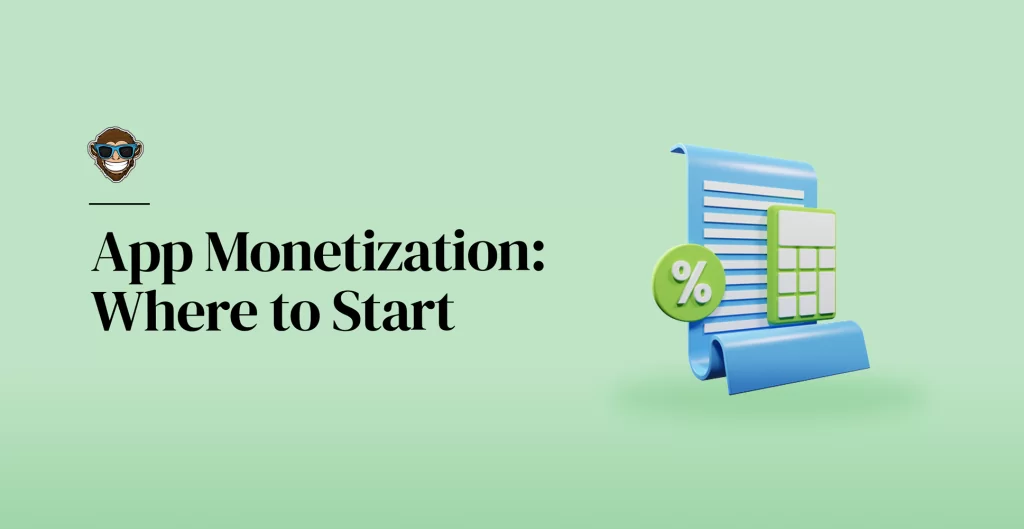
App Monetization: Where to Start
By now, you probably think that mobile apps are obviously not as profitable as paid ones. However, the fact is, you couldn’t be more wrong. Actually, according to Google, 98% of the company’s revenue comes from free apps. So, monetizing your free app sounds terrific and all, but you’re probably wondering where to begin. First of all, let’s establish what the concept of monetization entails. When we talk about app monetization, we refer to any means of earning money from a mobile product without charging for it. In other words, monetizing means making sure your app earns cash without charging users to download it. This last point is crucial because most users often recoil at the thought of paying to download an app when most of them are already offered for free. So, no matter which monetization strategy you choose or how you approach earning money from your app, you must ensure that you don’t charge your users to download your app. However, if you decide to do so, you must make sure your app offers some value or additional benefit that makes it worth it for your users to pay at the install point. Still, keep in mind that paid apps usually involve higher user expectations and, no matter how many great reviews, paid apps have substantially fewer downloads than free ones.
Additionally, the fact that free apps are overtaking app stores means that you have to adjust your monetization business model to account for all the “free” competition you will have. As a result, you, or your app developers, must select a revenue strategy that allows your product to generate cash after download so it can compete with the 94% of apps that function the same way. Also, keep in mind that your monetization strategy must allow your app to generate significant revenue while keeping its user experience intact. This second point is crucial and is an often overlooked one. Regardless of which monetization strategy you choose, you must always prioritize the insights gathered in your user research. In addition, your user journey mapping also comes in handy, so you can determine how your app’s overall user experience will be affected by monetization.
Keep in mind that maintaining your app’s user experience at optimal levels is crucial to enforcing a successful app monetization strategy. If your users love your app at the point of install but become bored or annoyed at the monetization point, then your revenue strategy is destined to fail. So, if you aren’t mindful and decide to monetize your app in a way that suits you but frustrates or aggravates your users, your app will end up losing valuable users and will not gain the revenue you aimed for, no matter how many times they downloaded it. Actually, we can even say that generating revenue requires happy, satisfied users. Therefore, whichever strategy you decide to go with, always keep your user research at the front line and consider your users’ needs before your own.
Now, let’s get down to it. Here are some of the most relevant free app monetization strategies to make revenue from your app in either the App Store, Google’s Play Store, or both.
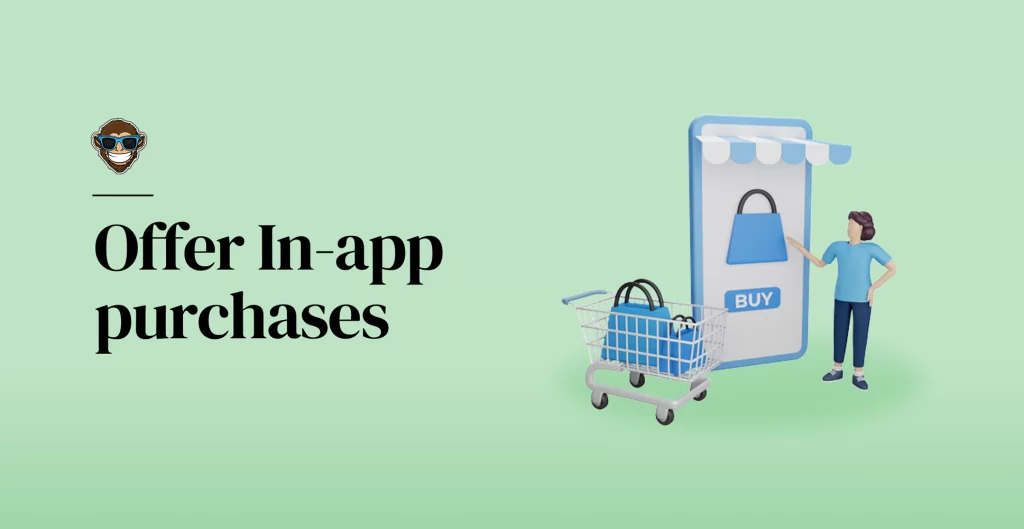
Offer In-app purchases
This approach to app monetization is the most obvious and popular one. It gives you the opportunity to still offer your app for free at the point of download while opening up the possibility of monetization once your user starts using–and loving–it. In that sense, in-app purchases are ideal. They are an unobtrusive approach to monetization that serves the double purpose of generating revenue while maintaining your app’s user experience. Moreover, when implemented correctly, it can even enhance it. In fact, even though only 5% of all app users will spend money on in-app purchases, studies show that almost 49% of mobile app revenue earnings come from purchases made after download. That means that profits generated by in-app purchases account for nearly half of all app revenue in app stores!
Take the Clash of Clans game, for instance. The game is free to download but offers in-app purchases where users can buy green gems, the game’s currency, to get weapons, buildings, and other elements that help them with the game’s dynamics. According to Statista, Clash of Clans generated almost $490 million in in-app purchases in 2020. On the other hand, we have Pokemon Go, another free-to-download app that offers in-app purchases such as Pokecoins, to make in-game advancements and gain milestones, earn prizes, and much more. Pokemon Go’s total revenue crossed the $5 billion mark in 2021, making it the top-grossing gaming application in history so far. And yeah, it’s offered for free in all app stores.
Keep in mind that all the transactions conducted in your app are handled by the app store, which, in Apple’s case, charges a 15% commission for each purchase made by users. So in that sense, how much revenue you earn from your app depends on what type of in-app purchase model you choose. In general, we can say that the in-app purchasing model has three different categories or approaches you can implement:
- Subscription: Also known as the freemium model, charging for subscriptions allows you to keep your app free for download while charging users to unlock additional content or premium features for a certain amount of time, usually in the form of a monthly or yearly subscription. Once the defined period is over, users must pay once again to keep using the app. Spotify is an excellent example of a freemium app.
- Consumable: Consumable in-app purchases are items that you charge your users for once so they can employ them to perform in-app activities. Consumable in-app purchases are primarily used in mobile games and come in the form of in-game currencies, tokens, and more lives. However, it has also been implemented by other companies, such as Skype, in the form of consumable minutes for certain VoIP services.
- Non-consumable: Non-consumable in-app purchases allow your users to make a one-time purchase in exchange for a benefit. These benefits, or features, are permanent and are often valid for an extended period of time or forever. These types of in-app purchases are primarily seen in apps that charge for adblocking.
Remember, which one of these three models you choose depends on your end-users and the data gathered from your user research. In-app purchasing has some drawbacks, such as implementing and integrating complex payment systems or very few users actually paying for in-app purchases. For that reason, you must ensure that the decision you make is an informed one to avoid those drawbacks from affecting your revenue.
So, as you can see, in-app purchasing is one of the most influential and popular monetization strategies that allow you to generate significant revenue while maintaining your user experience and keeping your app up there with all the free apps in the app stores.
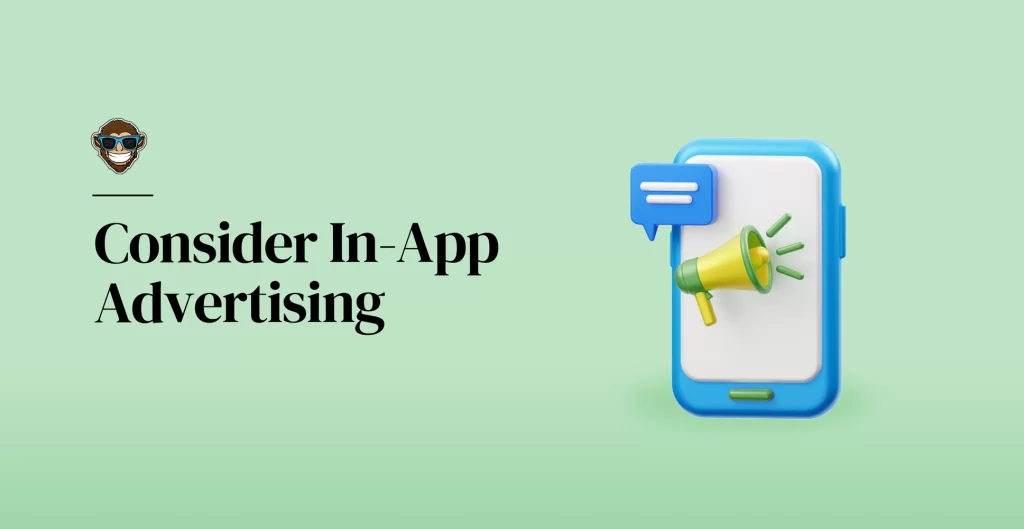
Consider In-App Advertising
Advertising is one of the most common and frequently used ways of monetizing mobile apps, especially when app owners and developers want their product to remain free for download. In-app advertising is a monetization approach for mobile applications that allows them to leverage parts of their app’s space to display ads to their users. In other words, an ad buyer pays you to let them display ads for their company or product inside your app. In that sense, in-app advertising represents a steady flow of income for you as long as you have ad space to sell. And, due to its rising popularity, more and more developers and app owners are choosing this method as the primary source of revenue for their free apps. As a matter of fact, the global in-app advertising market is expected to generate up to $200 billion in revenue by the end of 2021!
That all sounds great; however, if in-app advertising is your go-to strategy for app monetization, you need to learn how to approach it properly to avoid the many pitfalls that can come with this method. Due to the increase in the number of apps on the market, and the rise of in-app advertising, the mobile advertising format has changed and has become automated. This shift means that you can’t just wait for a company to contact you and say: “Hey, here’s some money, let me advertise in your app.” We wish it were that simple. However, there are many stakeholders and processes within the in-app advertising ecosystem that you need to consider:
In broad terms, first, you, or the app that wishes to display an ad, must make a request. This request is made to the ad network, a platform that connects advertisers and publishers, enables bidding and exchanges, and matches stakeholders depending on supply and demand. Then, with complex algorithms, the ad network figures out the highest paying ad for a specific user, selects it and publishes it. Ad networks also help show ads and apps to large pools of users, driving high-quality traffic and increasing engagement rates with better ad specificity.
Another crucial point to consider for in-app advertising is the types, or formats, of ads available to you. The design of the ad you choose is essential to keep your app’s aesthetics as clean as possible while protecting the user experience. Depending on your app, some ad formats can be overbearing while others are more subtle, so you must pay special attention to the ad type you choose:
- Banner ads: Banners are probably the most well-known types of ads. They are relatively simple and appear as a static or animated image/text combo across a banner inside your app. They usually have a call-to-action button and have a 10% conversion rate.
- Interstitial ads: Also called full-screen ads, interstitial ads are similar to banners, except they can expand and become full screen. They are less intrusive than other ad formats and can be shown during “breaks” within the app’s dynamics, such as between levels in a game. They have a 22% conversion rate.
- Native ads: The native ad format is designed to match the app’s user experience and match the flow of the app. Their primary goal is to blend with its UI/UX design.
- Rewarded video ads: This ad format is pretty self-explanatory. Users watch the ad, and they get a reward for it. For example, the ad can offer users extra currency, lives, armor, or other in-app boosters.
- Playable ads: Playable ads give the users the chance to try the app before sending them a call-to-action to purchase a subscription or download a game.
Aside from ad formats, you must also consider the types of ads you’re running. Ads that don’t align with your app’s purpose or your user’s needs can hurt your brand and damage its reputation. The same goes for slow, low-quality, and inefficient ads, which can also ruin your app’s user experience and become frustrating. On the contrary, around 80% of mobile app users claim they would gladly accept in-app ads that are relevant to their interests. So, pay special attention to which types of ads you choose to showcase within your app.

Sponsorships
Sponsorships are a less known and not very used method of monetizing free apps. However, that doesn’t mean they aren’t an effective way to gain significant revenue while also gaining more users for your app. Also known as influencer marketing, sponsorships and partnerships are a way to have your app sponsor other products and services, making your app a sort of advertising platform that earns revenue from showcasing said products. Moreover, sponsorships can expose your users to trusted partners and their products and services, which can be a valuable asset for your brand and your mobile product. This way, you can effectively monetize your app while connecting your users to a brand, person, or service that may adapt to their needs and add value to their lives. For instance, if you have a healthcare app, you can partner with a hospital or maybe even a pharma company and showcase their products to your users, giving them valuable recommendations while generating revenue for your app and raising brand awareness!
There is a caveat with this model, however. It is convenient and extremely useful for monetization as long as your app has already developed a considerable user base and has a reputation and a certain number of downloads. Additionally, if your app has a specific market niche and is popular among said niche, then sponsorships are for you. Now, we’re not saying that “small” or new apps can’t benefit from partnerships and sponsorships; they certainly can. The thing is that for sponsorships to work and become a two street where all parties benefit, there has to be a considerable audience that receives the messages and reacts to them; otherwise, it will get lost, and you will likely lose your investment. Additionally, suppose your app already has amassed a large user base and has an audience with particular interest within a specific niche. In that case, chances are brands of all sizes will be interested in partnering up with you and using your mobile product to showcase their products and contact their target audience.
So, if you decide to consider sponsorship as your monetization strategy, here are some considerations to keep in mind:
- Try to advertise their brand using targeted ads, display information about the product and brand within your app, or adapt part of your app’s design to the partner’s branding.
- Make sure you have a deep understanding of your app’s target audience. If you include your partner’s elements into your app, it’s crucial you do so in a way that maintains your user experience. It will do nothing for your app and your sponsor if you start showing intrusive ads and poorly designed images about your partner. Instead, understand what your users want and introduce your partnering brand based on those likes and dislikes.
- If you decide to introduce ads, make sure you mark them as sponsored content to avoid your users from feeling deceived.
- You must partner with brands whose target audience is the same, or at least similar to yours. Before building the app, creating a list of organizations and brands that could benefit from the partnership is a good starting point.
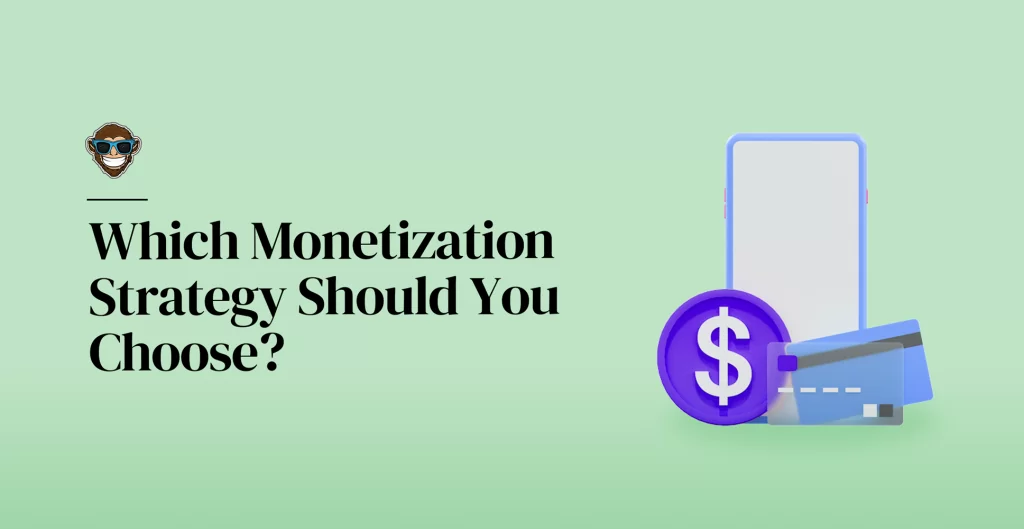
Which Monetization Strategy Should You Choose?
First and foremost, as with every other aspect of your app’s lifecycle in app stores, whatever you choose to do depends heavily on your user research. Once you get to really know who your users are and what motivates or annoys them, you can use this information to determine the best way to earn money from your app and which strategy–or strategies– to choose. On that same token, whichever approach to monetizing your app you decide to go with should be merged with your app’s flow as naturally and seamlessly as possible to avoid friction. Additionally, it should be entirely relevant for your target audience, solve their needs, adjust to their expectations, and be as unobtrusive and as sleek as possible. For instance, if you have a Fitness app where users can track their workouts, especially running, you can display sporting goods or running gear ads. You can partner with brands that sell these items and showcase them at specific parts of your app to encourage users to purchase them and honor your sponsorship agreement.
You can also opt to implement more than one of the models discussed in this article or even others that we didn’t include. There’s no one-size-fits-all approach to monetizing your app. You can mix and match as you see fit as long as you always keep your users’ needs at the forefront of all decisions you make. For example, you can display banner ads while offering users the option to pay for a monthly or yearly ad-free subscription. Whichever approach you opt for, the main goal to keep in mind when choosing the right strategy for you is aiming to generate the most revenue possible without affecting your app’s user experience.
The strategy or strategies you choose to develop must be thoroughly analyzed and adapted to your app’s UX/UI design so that you come up with elements of monetization that appear to be part of your app’s flow instead of going against it. Remember, the market for making money from mobile apps is already crowded. To stand out, you must find a balance between making money and making your users happy enough to stick to your app. It sounds complex but, once you get to know your users and become familiar with monetization models, you can gain revenue while keeping your app a user-friendly haven for your target audience. It truly is a win-win for everyone.
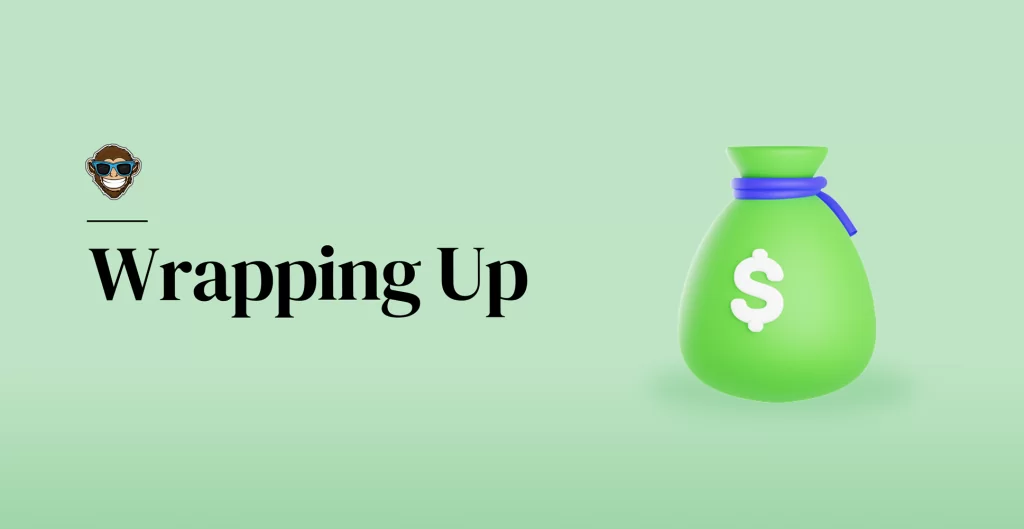
Wrapping Up
Monetization for mobile apps sounds more complicated than it is. It all lies in user research, user experience, and innovation. In any scenario, and whichever strategy you decide to go with, if you want to gain profit from your app, you not only need to have a great product, but you must deliver a high-performing, high-quality, user-friendly product. That means creating a well-planned revenue model that represents a monetary gain for you and life-changing experiences for your users. In that sense, the revenue streams from your app go hand in hand with your users’ satisfaction, creating a delicate balance that you must protect and ensure at all times. Getting this balance right can mark the difference between your users’ copping or dropping your app.
We hope we’ve managed to enlighten you as to the ins and outs of app monetization. Still, if you have any doubts or concerns, don’t hesitate to get in touch with us! We’re more than happy to help!
